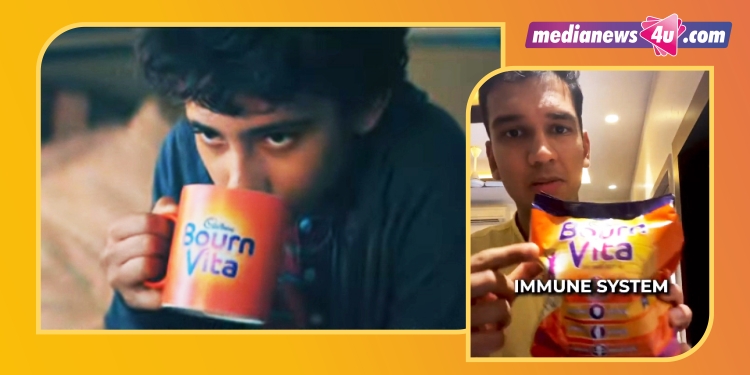Mondelez’s Bournvita was doing the rounds on social media thanks to a post on its sugar content – and its handling of the same. Soon not just Bournvita, more beverage brands were called out for promises on health benefits and their ingredients.
Does India need more transparent food labels/ stringent laws on food products? Does relevant truth get lost in the fine print?
‘There is a scope to further educate consumers’

Every few months, a viral video takes the WhatsApp world by storm. However, all is quickly forgotten without learning any lessons and it is business as usual. So the question is – does India have any regulations for food labels? Of course, yes. How many consumers take the trouble to read the back of a pack to read the product composition? Hardly any!
It is crucial for consumers to make use of the information which is already being made available to them. However, consumers, even the educated lot, do not take the time to understand the labels and are ‘shocked’ when some viral video comes their way – as if something new has been discovered.
Could we have more transparent labels? Of course, there is a scope to further educate consumers. Ideally via easy to understand and meaningful information on Front of Pack Label (FOPL) – specifically for High Fat Sugar Salt (HFSS) foods. HFSS declarations have been on the cards for years now, but guess what, there is a concern that such a declaration will classify more than 85pc of Indian traditional food and snacks unhealthy and gulab jamun, barfi, dhokla, achar, chutney will see red!
Every new crisis results in a knee jerk reaction and wakes up the regulators from their slumber. As a face-saving step, some committee is formed or an announcement of some new regulations being framed is made.
We have to wait and see if the MNCs as well as Indian manufacturers get that much needed push to mandatorily declare HFSS content on FOPL .
Most purchase decisions by consumers are based on advertising appeals and claimed in catchy taglines – be it the “Secret of our energy”, “tTaste bhi, health bhi” or “Grow taller” or gets lost in the ‘Health and Nutrition Drinks’ umbrella branding of the entire product category. While advertisements and marketing strategies can be persuasive, consumers should prioritise their health and make an informed choice. One must remember that whatever the food, portion size is important. Excess of anything is bad, whether someone wants to enjoy a fizzy drink because it is summer or gulp down a scoop of ice cream. Should one have one spoonful of sugar in nimbu pani or prefer a milk additive with the same amount of sugar, because it makes it more palatable for fussy eaters – is a choice.
But if something “unhealthy” (on account of composition, portion size and consumption pattern) is camouflaged as healthy, the regulator (FSSAI) should be monitoring the same.
– Shweta Purandare, Communications expert
‘We don’t need more info, we just need more awareness’

No matter how educated anyone is, the average Indian is clueless about basic nutrition facts. The man on the street in Kolkata who gorges rosogollas has no clue that the daily sugar intake should not be more than 25 grams. Those who serve royal thalis in premium restaurants don’t lose sleep over the obesity quotient of their foods. That’s because, in our country, ignorance is bliss.
FSSAI has mandated Nutrition Facts to be displayed on food labels for this very reason. Now should these labels be more transparent?
I’d say what’s more important is in training consumers to decode the available information. What’s really required is a crash course on the art of reading nutrition labels.
When a soft drink can says that the added sugar level is 10g per 100 ml, the consumer needs to do the math and arrive at the conclusion that glugging 330 ml in one go would be the equivalent of consuming 33 grams of sugar. And 33g is way above the 25g one should have in a day.
In a mathematically challenged country, one can’t expect the consumer to do the heavy lifting. Which is why we have food bloggers and nutrition buffs. It’s their job to turn the spotlight on the food labels and draw logical conclusions. Brands cannot and should not take offence to such initiatives.
My simple view is that we don’t need more info, we just need more awareness.
Marketers bury the information in fine print as there is so much to say in so little a space. It’s not as if they are conspiring to hide any malicious secrets. FSSAI could resolve this perhaps by developing a simple icon to indicate ‘Fattening Foods’. At least this way the consumer would know the perils of consumption.
– Anantha Narayan, Founder, Albert Dali Branding
‘Consumer education cannot happen only through labels’

It is very important to understand that consumer education is a must in any kind of pure brand marketing. Consumer education cannot happen only through labels on packs. That is mandatory, including size of font and letters and numbers. Ingredients, caution, proportion, health benefits or hazards are also a must. But is it enough? No. Transparency has to be done through consumer education on all media – TV, print, internet, digital, audio/radio and outdoor. Even if a small proportion of the amount spent on advertising the brand is spent on consumer education, through that brand’s advertising, the category will grow and the brand will increase in credibility. In fact, another name for brand, is trust. While reach of a brand is important, preach through consumer education is equally important.
– Jagdeep Kapoor, Founder, Chairman and Managing Director, Samsika Marketing Consultants
Feedback: [email protected].

















